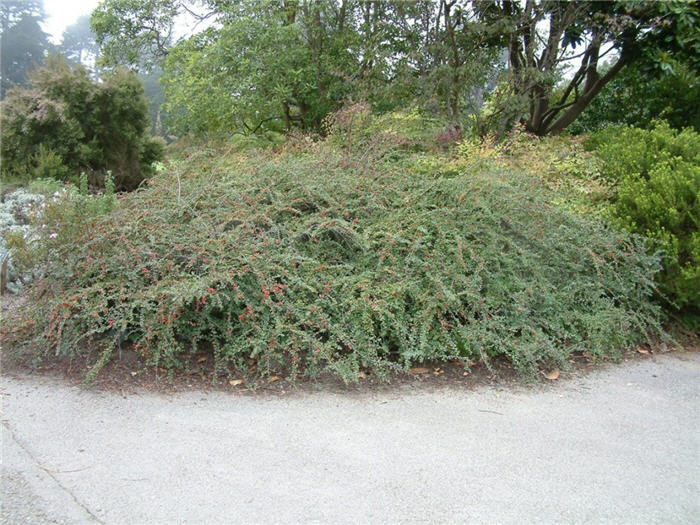| Botanical Name: Cotoneaster horizontalis | |
| Common Name: Rockspray Cotoneaster |

-
Anatomy
-
Culture
-
Design
Plant Type
Shrub, Ground cover
Height Range
1-3'
Flower Color
Pink
Flower Season
Spring
Leaf Color
Green, Dark Green
Bark Color
Brown
Fruit Color
Red
Fruit Season
Winter, Summer, Fall
Sun
Full, Half
Water
Low, Medium
Growth Rate
Moderate
Soil Type
Sandy, Clay, Loam, Unparticular
Soil Condition
Average, Rich, Poor, Well-drained, Dry
Soil pH
Neutral, Basic
Adverse Factors
n/a
Design Styles
Formal, Mediterranean, Ranch, Seascape, Woodland
Accenting Features
Espalier, Fall Color, Showy Flowers
Seasonal Interest
Winter, Spring, Summer, Fall
Location Uses
Shrub Border, Foundation, Parking Lot, Raised Planter, Walls / Fences, With Rocks
Special Uses
Cascade, Erosion Control, Mass Planting
Attracts Wildlife
Birds
Information by: Stephanie Duer
Photographer: Linda Engstrom, Connon N.
Photographer: Linda Engstrom, Connon N.
-
Description
-
Notes
Rockspray cotoneaster is a flat, spreading, semi-evergreen shrub that grows 2 to 3 feet high and to 5 to 8 feet wide. It has small, shiny, dark green leaves that turn orange and red before falling off. Small pink flowers in spring are followed by showy red berries in the fall and winter. 'Variegatus' offers variegated foliage.
Adaptable to soil type as long as it is well drained. Plant in full to part sun. Plant it where is has the room to spread out, as shearing will create a stiff and woody appearance. If pruning is necessary, prune selectively (see the Guides for more information). Drought tolerant once established, though in full sun it will need periodic watering to be at it's best.